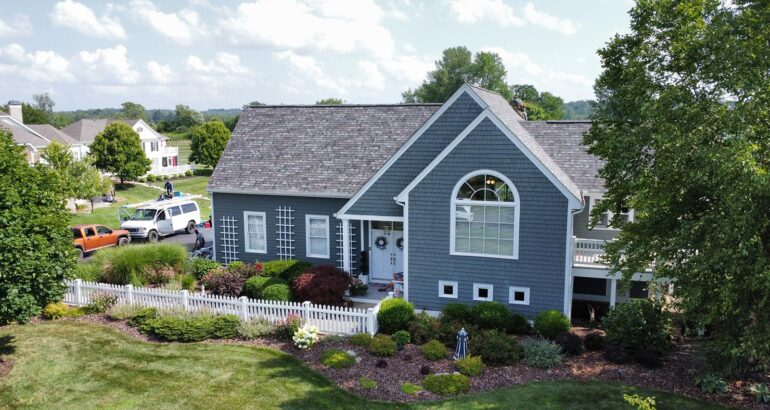
In the lifecycle of a home, few projects carry as much significance as a roof replacement. A well-executed roof replacement not only enhances the aesthetics of your property but also ensures protection against the elements for years to come. In this article, we delve into the intricate details of a roof replacement, covering each stage from assessment to completion.
The Initial Assessment and Planning before the Actual Roof Replacement
The journey of a successful roof replacement begins with a thorough assessment. Certified roofing professionals conduct a comprehensive evaluation of the existing roof’s condition. This assessment includes inspecting for signs of damage, leaks, deterioration, and overall structural integrity. Factors such as the roof’s age, material, and weathering are taken into account to determine the most appropriate course of action.
What’s involved in the roof assessment process?
- The first step in a comprehensive roof replacement project is an in-depth roof assessment. This critical stage sets the foundation for the entire process, as it informs decisions regarding material selection, scope of work, and potential repairs. An accurate assessment conducted by certified roofing professionals ensures that the replacement is tailored to the specific needs of your roof.
- Visual Inspection: Identifying Signs of Wear and Damage
During the visual inspection, experienced roofers meticulously examine the existing roof to identify signs of wear, damage, and deterioration. They look for cracked or missing shingles, curling edges, and areas of granule loss on asphalt shingles. Additionally, they assess the condition of flashing, chimneys, vents, and other roof penetrations that are prone to leaks.
- Leaks and Water Damage: Early Detection is Key
Roof leaks can lead to extensive damage if not addressed promptly. Roofing professionals carefully inspect the interior of your home for signs of water damage, such as stained ceilings, mold growth, and damp spots. By identifying these issues early on, they can pinpoint the source of the leaks and determine the extent of the damage.
- Weathering and Age: Understanding the Roof’s Lifecycle
The age of the roof and its exposure to various weather conditions play a significant role in its overall condition. Roofing experts consider how factors like UV radiation, rain, wind, and temperature fluctuations have affected roofing materials. This information helps them assess whether it’s time for a replacement or if repairs can extend the roof’s lifespan.
How do I decide on what material I need?
Choosing the right roofing material is crucial for the durability and longevity of the replacement. Popular options include asphalt shingles, metal roofing, wood shakes, and synthetic materials like composite shingles. Each material has its unique attributes, such as longevity, energy efficiency, and aesthetic appeal. The selection process involves considering factors like budget, climate, and the desired appearance of the new roof.
What will be done with my current roof?
Before installing the new roofing material, the existing roof must be carefully removed. This involves stripping away old shingles, underlayment, and any damaged components. The removal process ensures a clean and sound foundation for the new roofing material to be installed.
Once the old roofing material is removed, any underlying damage is addressed. This may include repairing or replacing damaged plywood, roof deck, and other structural components. Ensuring a solid substrate is essential for the proper installation of the new roofing material.
Roofing Material Installation
The chosen roofing material is then skillfully installed according to manufacturer guidelines and industry best practices. Each material has its installation process, whether it’s laying shingles, securing metal panels, or placing individual tiles. Proper installation techniques are critical to achieving a weather-resistant and aesthetically pleasing roof.
Finishing Touches
To complete the roof replacement, finishing touches are added. This may involve installing ridge vents, hip and ridge caps, and any additional trim or decorative elements. These final details enhance both the functionality and visual appeal of the new roof.
After the installation is complete, the job site is thoroughly cleaned to remove debris and materials. A final inspection is conducted to ensure that the roof replacement meets the highest standards of quality and craftsmanship. This step provides peace of mind that the new roof is ready to withstand the elements.
Factors.
Factors Affecting the Roof Replacement Process
There are multiple factors that can affect the roof replacement process including:
-Identifying the roof issues: There is a thorough roof assessment done.
-Old Roof Removal: The old roof has to be removed before installing the new roof
-Weather Conditions: Bad Weather can hold up the roof replacement process.
-Choosing the right material: Different Materials have different installation processes.
In conclusion, a roof replacement is a multifaceted process encompassing several critical stages. From the initial assessment and material selection to installation and finishing touches, each step contributes to the overall success and durability of the new roof. By understanding these essential components, homeowners can make informed decisions and collaborate effectively with roofing professionals to achieve a functional, beautiful, and long-lasting roof.
For more information, contact Hope Roofing, and we will be happy to install your new roof for you. Work with Experts and let us give you the roof you deserve.

